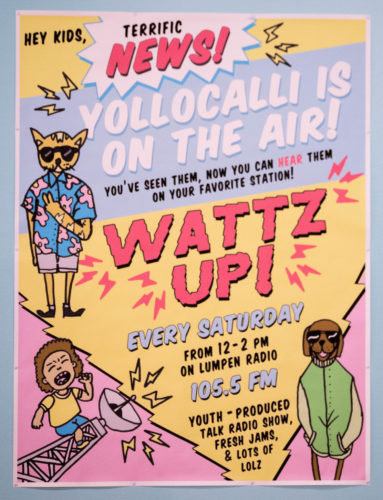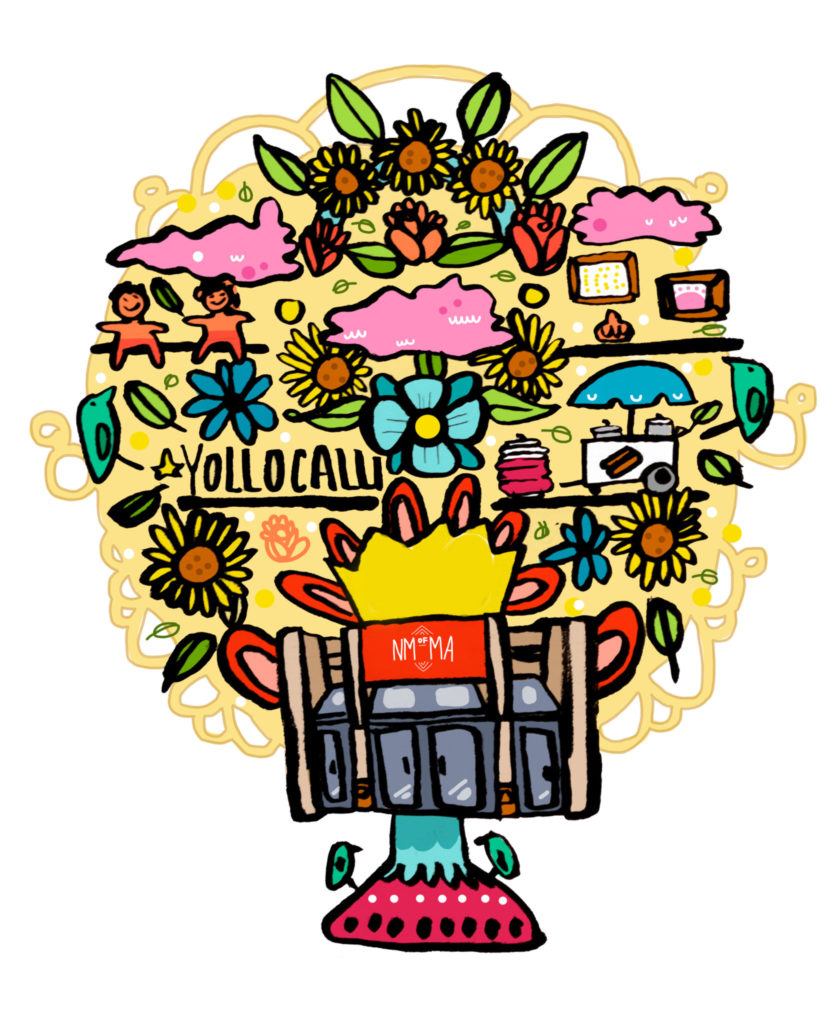A March afternoon in Chicago where sunlight pools in from all directions and warms the city’s cold concrete is rare, and the vibe in Little Village matched the day’s warm atmosphere. The building where Yollocalli Arts Reach hosts an artistic safe haven for primarily Latinx high school students is just as vibrant: a vintage building covered in graffiti art with colors like mustard yellow and bubblegum pink. This space, which partners with the Little Village Boys and Girls Club of Chicago, has the kind of energy that only youth can have.
“We like to keep this feeling of being an open and carefree space,” said Vanessa Sanchez, director of Yollocalli.
Sanchez is responsible for finding spaces like these for Yollocalli to host its art programs. Through classes on everything from print screening to radio production to incense making, Yollocalli cultivates the spirit of self-expression within its students. The uniqueness of Yollocalli’s programming starts there, in its wide array of offerings.
“Students can learn how to make a bath bomb, silkscreen some fabric to cover it with, then sell it at a shop,” Sanchez said, explaining how students can become involved in projects at every step of the process. “Our journalism classes start off with storytelling, then we encourage [the students] to start questioning the world around them. It’s up to them to come up with a theme and do interviews…then there’s a radio hour. Learning how to work the equipment and the board.”

An all-encompassing arts program, students are well-prepared to take on the professional or artistic world of their choice after being a part of Yollocalli’s family. A primary focus of the program is the independence and individuality that it affords its students.
“The kids got to present a proposal to the director of the National Museum of Mexican Art to get more student artwork inside their museum,” Sanchez said, beaming as the sunlight poured in through her office window.
Aside from artistic and intellectual endeavors, even physical activity plays a role. “We started a teen-led running group in the summer,” Sanchez said. “They’re supposed to build a brand and promote themselves.” The teen running group allows the students to become their own organizers and planners—skills invaluable to the professional world.
“I feel like we’re making way for this new generation of artists where maybe they don’t practice art, but they may donate to artists in the community and understand the importance of art,” Sanchez explained.
 And understand they do. As Sanchez gives a tour around the Yollocalli space, the combination of artistry with decorative practices remained balanced and lively.
And understand they do. As Sanchez gives a tour around the Yollocalli space, the combination of artistry with decorative practices remained balanced and lively.
The graffiti room featured caulking on the walls with various cartoons and designs from the students. The media room had bright blue walls with recording equipment lining the table and shelves and plants accenting the space. There was a collaborative room with bright pink and violet streamers hanging from the ceiling, couches with cozy, abstract quilts and a sitting area with multiple Apple desktop computers. Yollocalli’s space visually represented the combination of artistic practices that the nonprofit prioritizes.
“For the young people, it’s about choosing college or deciding not to. Those that have gone to college have gotten as far as being accepted into the Yale MFA program or working with Google,” Sanchez said in regard to the numerous opportunities that Yollocalli prepares students for after graduation.
But one of the hallmarks of the program is its present-day opportunities. Last Friday, Yollocalli hosted the opening of the Best of Yollo 2018, an annual showcase of the program’s art, at the National Museum of Mexican Art in Pilsen, the parent organization of Yollocalli.
The pieces were arranged by photography, mixed media, and painting, and as I wandered the gallery, the relationship of each piece to the artist and their community became clearer. I found myself standing next to a girl featured in one of the photos. Her name was Destiny Hernandez, a photographer and model with Yollocalli.
“I really like seeing everyone else’s work. It inspires me to make mine,” Hernandez said, as her friends nodded in agreement.
Gianni Reeseń, a fellow Yollocalli member, blushed as she admitted, “I wasn’t into modeling at first, but the program really got me into it. Now with these two [referring to her friends] being photographers, I’m really used to being in pictures and having my photo taken.”
“We try to create as much as we can—think outside of the box and have more field trips so we can be as active as possible,” Crystal Taylor, a Yollocalli photographer, said, describing her role as an artist in the program.
Kaleigh Doyen is a visual arts assistant at the National Museum of Mexican Art. “I identify a lot with the heritage here, which is something that I don’t get at a lot of other jobs. I come here and it feels like being at home,” Doyen said. As the assistant to the curator, Doyen helps organize the flow and overall vibe of exhibitions featured in the museum, exhibitions like Yollocalli’s annual showcase.
As Sanchez reflected on how far Yollocalli has come, she said, “alumni remember this space as being a place where they could do whatever they wanted and still be supported.”
Inside or outside of the studio, Yollocalli has developed a knack for encouraging members of the community to share their magic with others.
Yollocalli’s name comes from an Aztec language where yolotl means “heart” and kalli means “house.” True to its intent, Yollocalli houses the passion and vibrancy of Latinx youth throughout the city, and lends them a space in which to envision something fantastical from their daily lives—and its current students are more than ready to share their visions with the rest of Chicago.
Support community journalism by donating to South Side Weekly

